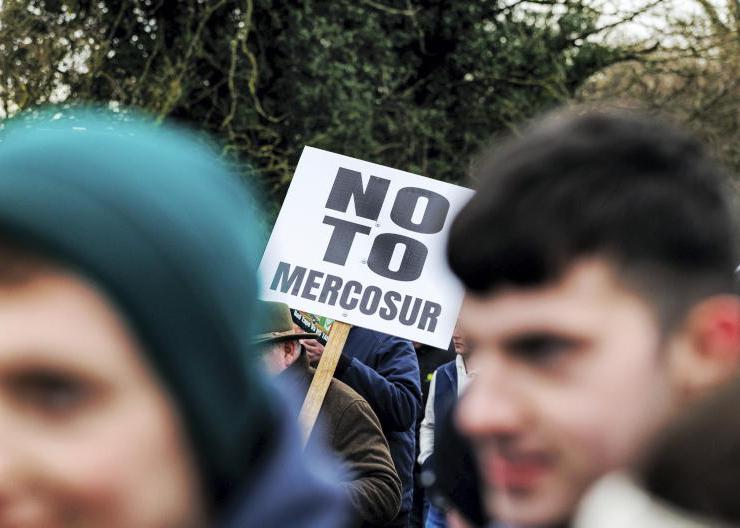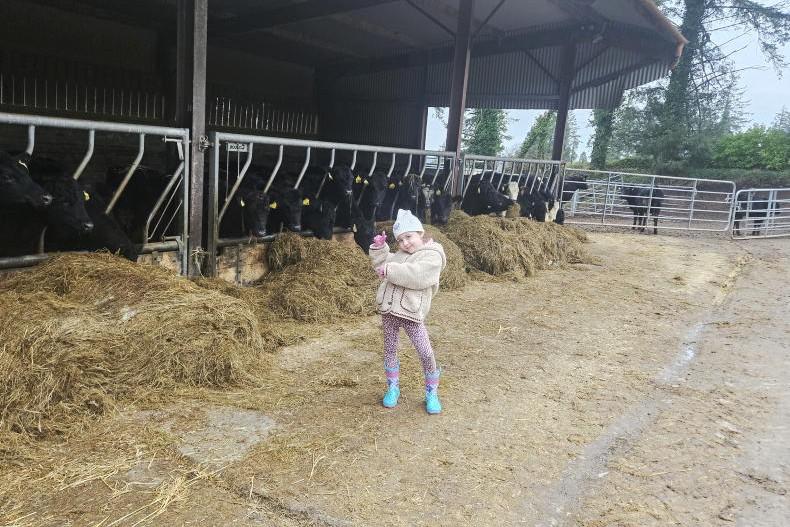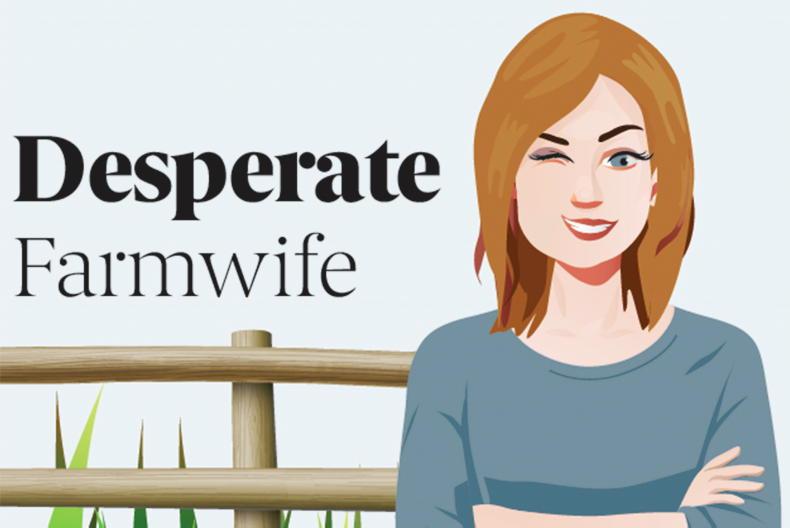In the not-too-distant past, there were no marriages in Ireland during Lent since all elements of pleasure were forbidden and consummation of the union could not take place. Therefore, the eve of the period of abstinence, Shrove Tuesday, became the most popular day to be married and the priest often had five or six couples happily pledging their vows at the altar. Given the nature of land inheritances, dowries and a myriad of other social issues, there existed a substantial portion of Irish society who never had the wherewithal to marry and lived out their lives as bachelors and spinsters. It happened then, that on Shrove Tuesday and on the first Sunday in Lent, those who were unmarried became the focus of degrading humiliation and mockery by the rest of the community.
In the south of Ireland, Shrove was known as “Skelliging Day” and those who were unmarried were sometimes physically corralled with ropes and ducked in horse troughs. It was the time when the infamous “Skellig Lists” were composed and anonymously published as purchasable and eagerly consumed broadsheets. In the printed verses, purporting that the couple would go to Skellig Michael to be married during Lent, unsuspecting bachelors and spinsters were mischievously paired together and publicly shamed with caustic wit, caricaturing their appearances and foibles.
the stócach was an effigy of a man placed on the roof of a house of anyone unmarried at this time of the year
A
The Irish folklore archive holds no end of accounts of ritual humiliations foisted on anyone “outside the married state”. On Chalk Sunday for example, during Lent, the unmarried became legitimate targets for the youngsters of the town to chalk the back of their Sunday overcoats, while in Kilkenny in the mid 19th century, there was a tradition of “Drawing the Log,” when those in question were obliged to partake in a humiliating parade.
In search of the stócach
When giving a lecture a few years back in Midleton, Co Cork, I was handed a small scrap of paper with the word “stócach” scribbled on it and was told that a man from Ballylanders, Cloyne had explained that the stócach was an effigy of a man placed on the roof of a house of anyone unmarried at this time of the year. Equally, it was sometimes the outline of a man painted with tar on the wall of the house. My search for the stócach commenced and I have been collecting references since.
I was chatting with Pat O’Hanlon, a bus-driver who grew up in Dromcollogher, Co Limerick. Pat remembers in the 1950s that they always had to go to mass early on Ash Wednesday morning to get the holy ashes before they went to school. He remembers seeing what he described as a scarecrow hanging from the telegraph wires in front of the house of two unmarried ladies, one who was a schoolteacher and the other a music teacher. When he went home, he asked his mother what the straw scarecrow was and she said “that was an old man for them to take to Skellig with them”.
There is a rich tradition of the stócach in the hinterland along the coast from Roches Point to Ballycotton in Co Cork and the Dúchas folklore archive reveals the following: on Shrove Tuesday night a crowd of boys dress up in old clothes. They go around to the houses where an old maid or an old bachelor lives. They make an old woman for the bachelor by getting a turnip for the head and a bag of straw for the body. They dress it in old clothes and they put it up on the pier. Sometimes they put the stócach on the pier or standing against the door and when the people of the house open the door in the morning, the stócach falls into the kitchen.
Double meaning
The Irish term stócach can mean a young fellow just coming into adulthood and has a positive sense of a virile young buck who is stocky, tall and full of potential. However, the stócach can equally be interpreted ironically and disparagingly to mean an idling, clueless waster. Patrick Dineen, in his translation of the term in his 1904 Irish-English Dictionary supports the double meaning while offering a further connection to the Shrove marriage traditions.
“Stócach .m. a stake, pole, mast, a tall person, a young man, an idler or sponger, a go-between or negotiator who accompanies a man looking for a wife at Shrovetide.”
Whichever sense you take from the character of the stócach, “fine buck”, “waster”, or “matchmaker”, the presence of the straw figure outside one’s house was fully intended to humiliate and cast those not married as social failures. Nowadays we are taken back at the overt nature of such cruel practices, but it is instructive to recognise the timing and meaning of the custom. Spring is the season of sowing seed and fertility and the stócachs and Skellig Lists and other public humiliations were inherited annual folk rituals which pilloried the infertile and openly promoted human procreation.
Shane Lehane is a folklorist who works in UCC and Cork College of FET, Tramore Road Campus. Contact: shane.lehane@csn.ie
Read more
Folklore with Shane Lehane: knotted in love
Folklore: Lug, Ancient God of the Harvest
In the not-too-distant past, there were no marriages in Ireland during Lent since all elements of pleasure were forbidden and consummation of the union could not take place. Therefore, the eve of the period of abstinence, Shrove Tuesday, became the most popular day to be married and the priest often had five or six couples happily pledging their vows at the altar. Given the nature of land inheritances, dowries and a myriad of other social issues, there existed a substantial portion of Irish society who never had the wherewithal to marry and lived out their lives as bachelors and spinsters. It happened then, that on Shrove Tuesday and on the first Sunday in Lent, those who were unmarried became the focus of degrading humiliation and mockery by the rest of the community.
In the south of Ireland, Shrove was known as “Skelliging Day” and those who were unmarried were sometimes physically corralled with ropes and ducked in horse troughs. It was the time when the infamous “Skellig Lists” were composed and anonymously published as purchasable and eagerly consumed broadsheets. In the printed verses, purporting that the couple would go to Skellig Michael to be married during Lent, unsuspecting bachelors and spinsters were mischievously paired together and publicly shamed with caustic wit, caricaturing their appearances and foibles.
the stócach was an effigy of a man placed on the roof of a house of anyone unmarried at this time of the year
A
The Irish folklore archive holds no end of accounts of ritual humiliations foisted on anyone “outside the married state”. On Chalk Sunday for example, during Lent, the unmarried became legitimate targets for the youngsters of the town to chalk the back of their Sunday overcoats, while in Kilkenny in the mid 19th century, there was a tradition of “Drawing the Log,” when those in question were obliged to partake in a humiliating parade.
In search of the stócach
When giving a lecture a few years back in Midleton, Co Cork, I was handed a small scrap of paper with the word “stócach” scribbled on it and was told that a man from Ballylanders, Cloyne had explained that the stócach was an effigy of a man placed on the roof of a house of anyone unmarried at this time of the year. Equally, it was sometimes the outline of a man painted with tar on the wall of the house. My search for the stócach commenced and I have been collecting references since.
I was chatting with Pat O’Hanlon, a bus-driver who grew up in Dromcollogher, Co Limerick. Pat remembers in the 1950s that they always had to go to mass early on Ash Wednesday morning to get the holy ashes before they went to school. He remembers seeing what he described as a scarecrow hanging from the telegraph wires in front of the house of two unmarried ladies, one who was a schoolteacher and the other a music teacher. When he went home, he asked his mother what the straw scarecrow was and she said “that was an old man for them to take to Skellig with them”.
There is a rich tradition of the stócach in the hinterland along the coast from Roches Point to Ballycotton in Co Cork and the Dúchas folklore archive reveals the following: on Shrove Tuesday night a crowd of boys dress up in old clothes. They go around to the houses where an old maid or an old bachelor lives. They make an old woman for the bachelor by getting a turnip for the head and a bag of straw for the body. They dress it in old clothes and they put it up on the pier. Sometimes they put the stócach on the pier or standing against the door and when the people of the house open the door in the morning, the stócach falls into the kitchen.
Double meaning
The Irish term stócach can mean a young fellow just coming into adulthood and has a positive sense of a virile young buck who is stocky, tall and full of potential. However, the stócach can equally be interpreted ironically and disparagingly to mean an idling, clueless waster. Patrick Dineen, in his translation of the term in his 1904 Irish-English Dictionary supports the double meaning while offering a further connection to the Shrove marriage traditions.
“Stócach .m. a stake, pole, mast, a tall person, a young man, an idler or sponger, a go-between or negotiator who accompanies a man looking for a wife at Shrovetide.”
Whichever sense you take from the character of the stócach, “fine buck”, “waster”, or “matchmaker”, the presence of the straw figure outside one’s house was fully intended to humiliate and cast those not married as social failures. Nowadays we are taken back at the overt nature of such cruel practices, but it is instructive to recognise the timing and meaning of the custom. Spring is the season of sowing seed and fertility and the stócachs and Skellig Lists and other public humiliations were inherited annual folk rituals which pilloried the infertile and openly promoted human procreation.
Shane Lehane is a folklorist who works in UCC and Cork College of FET, Tramore Road Campus. Contact: shane.lehane@csn.ie
Read more
Folklore with Shane Lehane: knotted in love
Folklore: Lug, Ancient God of the Harvest










SHARING OPTIONS